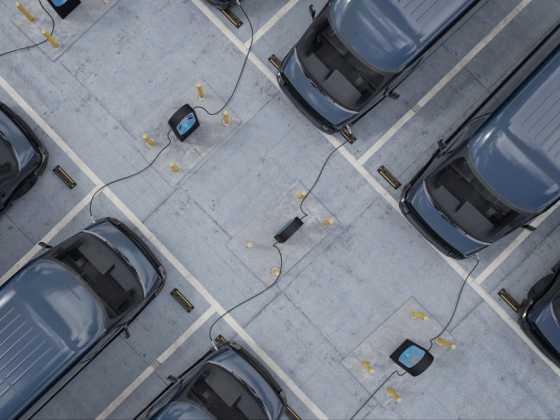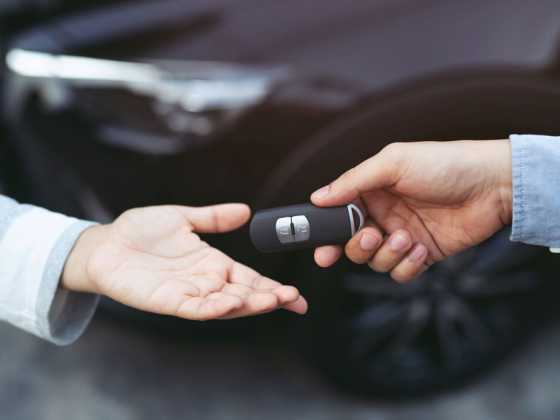What winter means for electric vehicles
For the electric vehicle owner, winter brings with it extra uncertainty. What will my range be like? How will my car handle in snow and ice?
 Can I keep my heater on and still get home? Michael Boxwell, author of the Electric Car Guide, answers some key questions
Can I keep my heater on and still get home? Michael Boxwell, author of the Electric Car Guide, answers some key questions
I’ve driven electric cars since 2006 and worked with various manufacturers on electric vehicle developments since 2010. One of the most common questions I am asked is how the cars perform in the winter.
Thankfully, driving an electric car in winter is not as worrying as you might think. Whilst the overall range of the car is reduced, the smooth electric motor makes driving an electric car easier and often safer. Additionally, most electric cars have a pre-heat function that ensure you remain warm and snug from the moment you get behind the wheel.
Of course, winter driving can be hazardous in any vehicle. All the usual driving tips for conventional cars are important to observe: plan your journey, check the weather conditions before you leave, make sure you carry de-icer and a windscreen scraper. Take your time when driving and expect hazards around every corner. Winter tyres are a worthwhile investment, whatever vehicle you are driving, offering increased grip and improved tyre wear in cold conditions.
Driving in snow and ice
An electric car is often at an advantage when driving in snow and ice. With no gears and an ultra-smooth motor, you are far less likely to slip and slide when accelerating.
The narrow eco tyres on many electric cars can also help, aiding grip on packed snow.
The power characteristics of an electric motor mean that it is very easy to pull away and minimise wheel spin with an electric car. Simply release the handbrake and gently touch the accelerator and the smooth power delivery will usually allow the car to pull away with minimal fuss.
Electric car owners can use regenerative braking – where the motor progressively slows the car and uses the motion of the wheels to recharge the batteries – to provide far smoother and safer braking.
The method for slowing a car using regenerative braking does vary between models. On the BMW i3 or Mitsubishi i-MiEV, for example, simply taking your foot off the accelerator will activate the regenerative braking, gently slowing the car down to walking pace before you apply the brakes to bring the car to a halt. On the Nissan LEAF, gently touching the brake pedal activates the regenerative braking.
Because the motor is used for both accelerating and braking, the overall balance of the car remains more consistent. This is a significant benefit when driving on ice or slow. Regenerative braking reduces the chance of skidding or sliding and minimises the risk of losing control of the car. Overall braking distances are similar to other cars braking gently in slippery conditions.
How is the range affected?
When the temperature plummets, so does the range on most electric cars. Not only is there an increased use of in-car heating and lighting, the batteries themselves do not perform as well. Owners report that in sub-zero temperatures, range can drop by around 30-40 per cent compared to the optimum range in summer.
Independent real world tests that I carried out for the 2015 edition of The Electric Car Guide using a Nissan LEAF and a Mitsubishi i-MiEV bear this out. I carried out a series of driving tests on fixed routes during the winter of 2012-2013 and repeating them during the summer of 2013. There were individual tests for city centre, extra-urban, cross country and motorway driving.
I measured an average range of 86.75 miles (139.92km) when driving the Nissan LEAF in an average ambient temperature of 21°c. In an average temperature of -7°c, the range dropped to 67.02 miles (108km) without using cabin heating and to 53.29 miles (85.96km) with the heating switched on.
The Mitsubishi i-MiEV provided an average range of 78.25 miles (126.21km) in the summer with an average ambient temperature of 22°c. In an average temperature of -8°c, the range dropped to 53.39 miles (86.11km) without using cabin heating and to 42.88 miles (69.16km) with heating.
Whilst this is a significant drop in range, the remaining range is still far higher than a typical daily driving distance. With the average car journey of 6½ miles in the UK and the average distance travelled throughout the day of 22 miles, an electric car still fulfils its role even in the depths of winter.
Staying warm
Thankfully, the days of wearing a thick coat and gloves to stay warm in a G-Wiz in the depths of winter are long gone. Modern day electric cars have powerful electric cabin heaters that can heat the interior quickly, even in the coldest conditions. However, that comes at a cost: after the power used by the motor, the cabin heater is the biggest drain on the batteries.
Thankfully, you don’t have to make the choice between range and keeping warm. Most electric cars have a useful feature called pre-heating that allows you to heat up the interior whilst the car is still plugged in. Depending on which car you have, you can switch on pre-heat either by pressing a remote button on your key fob or more commonly by running an app on your mobile phone. When you get to your car the screen is defrosted, the interior is warm and you’re ready to head on your way in comfort, using far less of your charge to maintain the temperature within the cabin.
Charging times
When batteries are cold, the amount of time it takes to charge them increases. Overnight charging can take an extra hour or two to fully charge up the batteries, whilst rapid charging at a motorway service station may take up to forty-five minutes instead of thirty.
Combined with the shorter range and the opportunity for pre-heating the car on their return, many electric car owners take every opportunity to plug their cars in during the winter months, both at home and using public charging points. For typical day-to-day driving, opportunity charging has a mostly psychological benefit for owners, but at least they know the car is available to use whenever they need it.
When it gets really cold
During vehicle development testing, I’ve driven electric cars in temperatures as low as -18°c, but many owners have used them in far lower temperatures than that.
Somewhat surprisingly, Norway is one of the biggest markets for electric cars, with the Nissan LEAF, Mitsubishi i-MiEV, Tesla Model S and BMW i3 regularly featuring in the top ten best selling cars list each month.
Research carried out in 2010 by one car manufacturer identified that Norwegian electric car owners tend to plug their cars in at every opportunity and use the pre-heat function to keep their cars warm. They are more likely to store their cars in a garage overnight to minimise the impact of the severe cold temperatures, but otherwise use their cars and travel a similar daily distance to drivers in the United Kingdom.
All in all, if an electric car is a practical proposition for you during the summer months, it is also a practical proposition during the winter. The power characteristics of an electric motor, combined with regenerative braking can make driving in adverse weather conditions safer and easier than a conventional car, whilst the pre-heat function ensures your comfort behind the wheel.
About The Electric Car Guide
The only book of its kind currently on the market, The Electric Car Guide has been significantly updated for 2015.
Issues covered by this book include the practical implications of owning and driving electric cars; the purchasing and running costs involved; detailed descriptions of the various car models available; and a guide to buying used electric cars. It also explores the environmental implications and includes some unique ‘real world’ fuel economy figures compared with those for cars with combustion engines.
With a foreword by electric car enthusiast, comic actor and presenter Robert Llewellyn, and interactive links to the author’s website, the book is an indispensable guide to anyone interested in owning an electric car.
Buy the book on Amazon
About the Author
Michael Boxwell is the author of The Electric Car Guide; 2015 Edition, which is to be published by Greenstream on 1 December 2014.
Michael is a former managing director of a leading electric car supplier, long time electric car enthusiast and internationally bestselling author of The Solar Electricity Handbook (Greenstream Publishing, 2014).
Michael is a regular guest speaker in the media on environmental and motoring issues, has a forthcoming regular show with BBC radio and is the former co-host of the Transport Evolved show and has also provided support for electric car features on well-known motoring show Top Gear.






